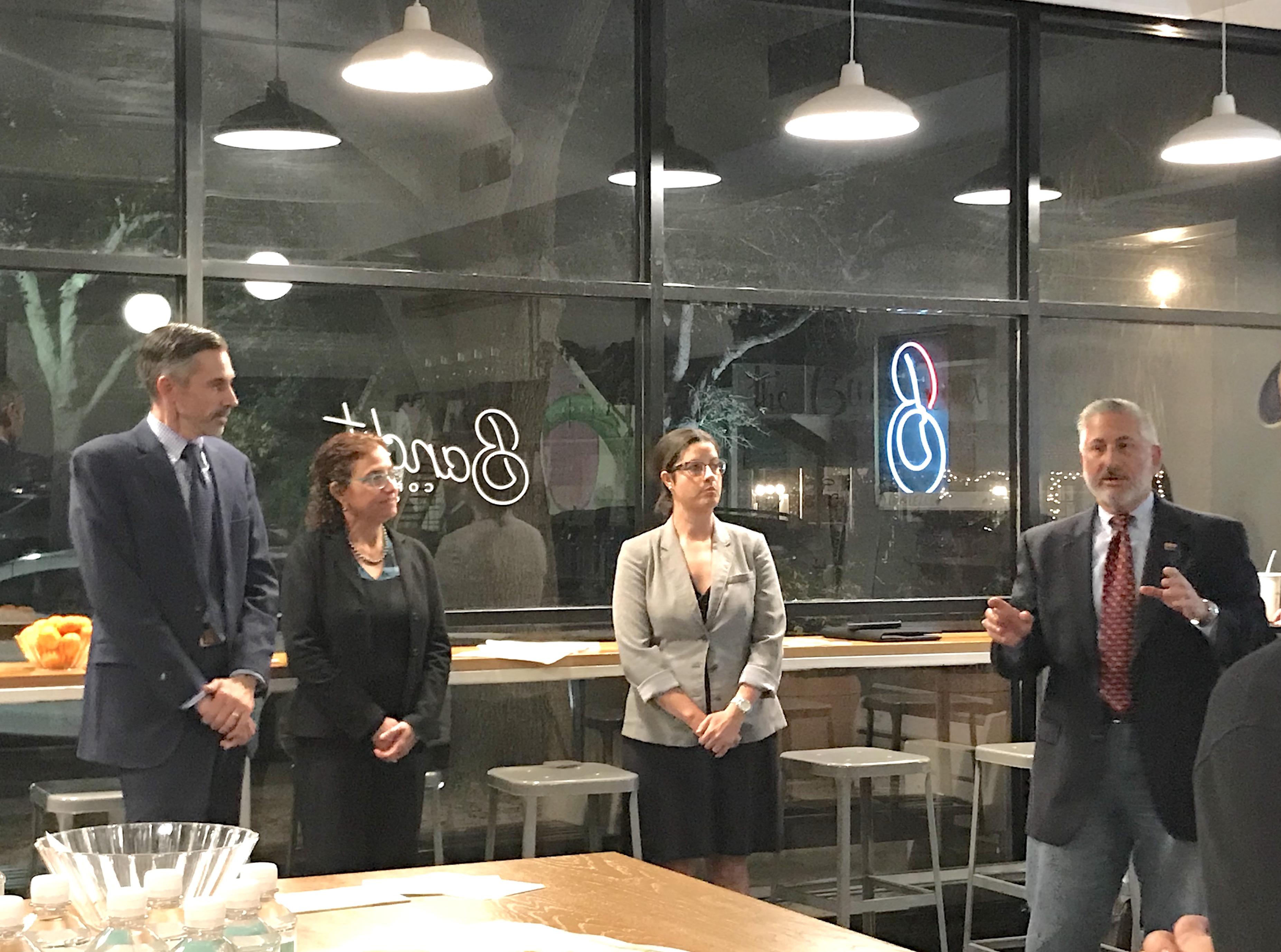Know
Downtown St. Petersburg plan promotes independent business, makes it tougher for chains

Chain businesses that want to set up shop in part of downtown St. Petersburg likely would have to downsize their store, under a new plan that aims to preserve the character of the city.
The Storefront Conservation Corridor plan was created to promote independently owned businesses, maintain pedestrian-friendly streetscapes and promote the conservation of historic assets along Beach Drive and Central Avenue, from the waterfront to 31st Street.
It sets standards for storefront sizes and includes financial and other incentives to retain independent businesses, which are some of the city’s best assets, Mayor Rick Kriseman said at a community meeting at Bandit Coffee, a Central Avenue coffee shop in the Grand Central District.
“While not outright prohibiting chains, [the plan] certainly makes it a little more difficult for them to come in, and if they do come, it makes sure that they don’t look like they typically look, but instead they look and feel like every other business they are next to and that’s across the street from them,” Kriseman said.
Concerns over chain business in downtown St. Petersburg have been simmering for months, and made headlines when a developer proposed a Dunkin’ Donuts with a drive-thru at 913 1st Ave. N. The Development Review Commission rejected the drive-thru in March.
The Storefront Conservation Corridor that city officials unveiled Monday has evolved over the past 18 months, based on feedback from the community, officials said.
It establishes a minimum requirement and a maximum width for street-level storefronts. Beach Drive has the highest concentration of larger storefronts, more than 40 feet in width, said Derek Kilborn, manager of urban planning and historic preservation. Storefronts get smaller going west on Central Avenue, he said.
“When someone is modifying the space, or if it’s a redevelopment scenario — for example the vacant lot at Central Avenue and 4th Street — instead of having one large restaurant like you see at One St. Petersburg, where Oak & Stone takes up a substantial frontage of that building, they’ll be required to have a higher concentration of smaller storefronts, zero to 20 feet in width, and medium storefronts 20 to 40 feet in width,” Kilborn said.
Chain restaurants and retailers typically have larger storefronts, Kriseman said.
“With this plan, if they are going to try to locate in one of these areas, they are going to have to be willing to downsize in order to go in there,” Kriseman said. “If they do that and with the design standards, it won’t feel like their usual business. We’re not banning them, but it makes it a little more challenging for them to come in, and if they do come in they have to be willing to fit our design standards and size standards so it still maintains that character.”
The new plan also includes incentives for independent businesses and building owners and developers.
There’s a $175,000 Independent Corridor Fund in the just-approved city budget that is geared for businesses that want to stay in their current location, but need financial help to do that, said Jessica Eilerman, manager of The Greenhouse and the city’s small business liaison. There is a list of approved uses for the fund, which is in the final stages of development, she said.
There’s also reduced parking space requirements for property developers or building owners who rent to independent businesses, said Liz Abernathy, director of planning and development services.
Current city code requires one parking space for every 500 square feet in a business. The new plan eliminates that requirement for spaces that are 4,000 square feet or smaller, taking into account the expense of tenant separation such as putting doors and walls inside a property, she said.
City officials want to hear what businesses have to say about the corridor plan but don’t want to wait too long. Kriseman said he wants to bring a proposal before the City Council in the next several months.








Ester VenouziouVenouziou
November 6, 2018at9:37 am
While I appreciate the city’s efforts and I agree this plan can help preserve a traditional Main Street look, I don’t think it goes enough to support small locally owned businesses.
A Starbucks, for example, can very easily set up with under-20 or under-40 feet of frontage, and add an awning, to comply with the proposals. And a Starbucks with a smaller footprint and a pretty awning is, still, a Starbucks. It’s not a small independent coffee shop.
In my opinion, the city’s proposal accomplishes one of the reasons we love local (exterior character), but not the others (such as keeping money local, offering unique product selections, helping the”little” guys).
I understand there are other components to the plan,but, in my opinion, all combined it’s still not enough.
— Ester Venouziou, LocalShops1